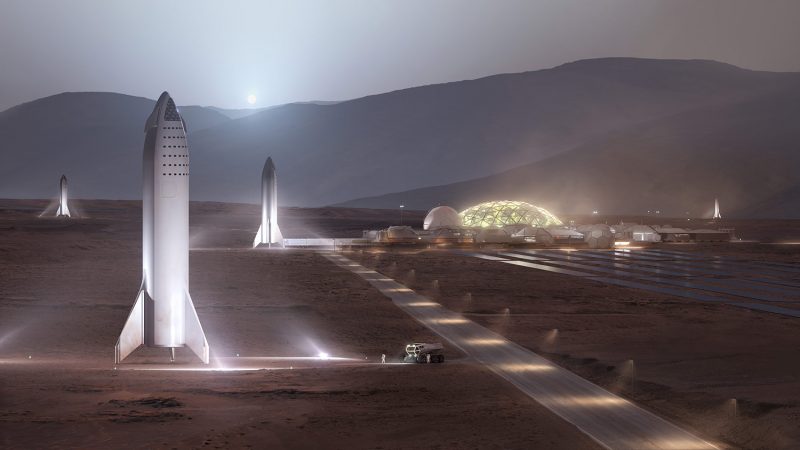- SpaceX is designing a new rocket ship, called Starship, to send about 100 people to Mars at a time.
- Elon Musk, the rocket company’s founder, said on Twitter that Starship could be 10 times cheaper than the least expensive rocket today.
- Musk added he is “confident” Starship may be cheap enough for most people to “sell their home on Earth & move to Mars if they want.”
Elon Musk is trying to make it a no-brainer for you to move to Mars.
Musk, the founder of SpaceX, shared his thinking on cost-effective space travel on Twitter over the weekend.
“I’m confident moving to Mars … will one day cost less than $500k & maybe even below $100k,” Musk tweeted on Sunday. “Low enough that most people in advanced economies could sell their home on Earth & move to Mars if they want.”
He added that if anyone decides they don’t like Mars (there are plenty of reasons to hate it), a “return ticket is free.”
The comments came after Musk revealed new details about his rocket company's truck-sized rocket engine, called Raptor, and the launch system it'd propel to the moon and Mars, called Starship.
On Sunday, Musk said the Raptor engine has been fired more than a half dozen times at a SpaceX facility in McGregor, Texas. He also shared technical data from those tests, including the engine's efficiency, chamber pressure, other details.
Raptor engines are crucial to making Starship work. Up to six of the engines will power the roughly 18-story Starship. Meanwhile, the system's 22-story rocket booster, called Super Heavy, may use up to 31 Raptor engines.
SpaceX plans to fix the first Raptor engines onto a "test hopper" prototype at a site near Brownsville, Texas, then launch it on short "hops" up to a few miles high.
How Musk plans to make space travel cheap with Starship

Musk's ultimate goal for the future of Starship and SpaceX is to enable humans to live on Mars. He began sharing that vision in 2015, saying he wants to back up the human race like hard drive in case something terrible befalls Earth.
Since then, Musk has worked toward replacing SpaceX's mainstay rocket, Falcon 9, with a larger but dramatically lower-cost system. (That's Starship, though it has gone by other names - most recently "Big Falcon Rocket.")
"This will sound implausible, but I think there's a path to build Starship / Super Heavy for less than Falcon 9," Musk said.
SpaceX charges about $62 million per launch of a Falcon 9 rocket, which can carry payloads weighing up to 25 tons into low-Earth orbit. On Sunday, Musk predicted that Starship would cost "at least 10X cheaper" to send up the same sized payload.
Starship is designed to take about 100 tons of cargo and 100 people to Mars. Part of the reason Musk expects it to be so cost-effective is the system's size - launching more at once can lower costs.
But the biggest reason Starship could be so much cheaper is that it's designed to be fully reusable. This prevents losing multimillion-dollar hardware after a single use (a typical practice in the rocket-launch industry) and limits launch costs to refilling fuel and refurbishing parts. Starship's reusability may also allow it to refuel on liquid methane and oxygen once it has landed on Mars (Musk said this fuel can be manufactured on the red planet's surface) for a return trip to Earth.
Musk also confirmed on Sunday that a recent and "radical" shift in the design of Starship will be a "big factor" in keeping costs down. Instead of making the rocket ship out of lightweight, super-strong carbon-fiber composites, Musk has asked his engineers to use low-cost stainless-steel alloys.
Steel costs about $3 per kilogram, Musk told Popular Mechanics in December, while carbon fiber can cost about $200 per kilogram - a 66-fold difference. Musk tweeted in January that using steel could counterintuitively make Starship lighter, allowing it to carry more cargo at a time.
SpaceX's "aspirational" goal is to launch the first cargo mission to Mars in 2022 - just three years from now. Then in 2023, Musk hopes to send the Japanese billionaire Yusaku Maezawa and a crew of artists on a trip around the moon. If all goes well with those two launches, he wants to send the first crewed Starship missions to Mars in 2024.

